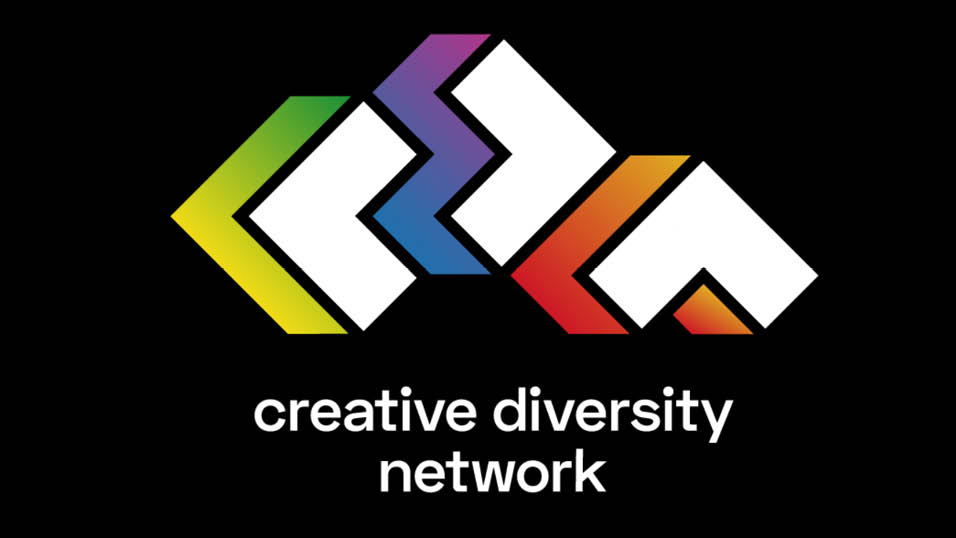
Industry backed TV diversity organisation, Creative Diversity Network (CDN), has published a new analysis of six years of Diamond data on how well writers, directors and producer-directors are represented in the UK television industry.
Writers, Directors and Producer Directors: A six-year overview of Diamond data 2016/17 to 2021/22 reveals that despite the longstanding recognition of the significant underrepresentation of women in these roles, and the creation of industry initiatives to address it, the gender gap for female directors and writers has actually increased over the past six years, and those women who are working in these roles are more likely to be contributing to non-peak programmes.
The report also highlights that where there are pockets of progress, for example the increased number of Black, Asian and Minority Ethnic, and disabled writers and directors working in UK television, their ability to make the same number of contributions to programmes is more limited than their white, non-disabled peers.
CDN carried out the work following discussions with Directors UK and the Writers’ Guild of Great Britain whose research also flagged this under-representation, especially of women and people from a Black, Asian and Minority Ethnic background.
Deborah Williams, CEO, Creative Diversity Network said: “Over the years we have seen broadcasters, streamers, production companies and industry bodies launching a series of initiatives aimed at diversifying writers and directors. But our analysis of six years of Diamond data makes it clear that these efforts are yet to be operating at the necessary scale, or they have simply failed to achieve the intended impact. It is very disheartening to see the number of women in these roles actually decrease over this period, and other groups are not being given opportunities to actually make shows, at the bigger-budget, peak time end of the scale.”
“We need to see a shift from piecemeal and programme-level initiatives to more transformational change, which are accountable and transparent.”
Directors UK released a response to the report saying, “The data in the CDN deep dive report on Writers, Directors and PDs is dire. We are going backwards.
“Broadcasters, all the evidence is here: individual and programme level initiatives and interventions alone do not change a systemic problem.
“Your policies aren’t working – and ultimately only you and your production partners can give people jobs. You need clear and ambitious commissioning guidelines that ensure diversity amongst those who create and author our TV programmes.
“Speaking on behalf of under-represented directors, we demand that you explain to us how your ED&I plans are making a long-term difference.
“Here’s six years of your data, isn’t it time to find a solution to this problem?
“You are responsible for this change. What are you going to do?”
Directors UK CEO Andy Harrower added: “If broadcasters genuinely want to address this systemic issue, they have to have clearer commissioning targets, a willingness to hire under-represented talent and commit to a structure that supports career progression. Transparent data reporting is also key to holding the broadcasters to account.”
WGGB General Secretary Ellie Peers said: “This report has made clear what we have long suspected, that multiple schemes and initiatives are failing to create real systemic change in the industry. It has been over five years since we released Equality Writes, showing that women writers faced a glass ceiling with no progress being made to increase their representation. This report now shows that for women writers the situation is getting worse, not better and for other underrepresented groups progress is far too slow. This is unacceptable and cannot be allowed to continue.
“We need a complete reset and are calling for an independent inquiry to investigate systemic issues of racism, sexism, ableism and all forms of discrimination that exist within the industry.”
WGGB Equality and Diversity Co-Chair Sumerah Srivastav said: “This report tells us what we hear all too often from other members, that writers often end up on schemes, but these rarely turn into real work opportunities. If we want to see representation increase, we need broadcasters, producers and commissioners to actually engage diverse talent. No more excuses – the talent is out there, there just needs to be the will to use it.”
Key findings
The report found that while women are well represented in the TV industry overall, they are far less likely to occupy the key senior creative and authorial roles of director than their male counterparts, making just 25.3% (director) and 32.4% (writer) of contributions to programmes broadcast in 2021/22. These figures have declined over the past six years from 26.9% (directors) and 42.8% (writers) in 2016/17.
In 2020/21, there was a significant drop in the proportion of female writers working in the industry down to 36.6% from 39.6% in 2019/20, “perhaps a consequence of the COVID-19 pandemic and subsequent lockdowns, which are likely to have disproportionately impacted women, and particularly those occupying more senior roles who are likely to be older and therefore more likely to have caring responsibilities.”
Female writers, directors and producer directors are also much less likely than their male counterparts to be employed on peak-time programmes (35.8% female writers, 32.1% female directors) than on non-peak time programmes (43.6% writers, 35.8% directors).
Female writers are particularly under-represented (30.2%) in Comedy programmes, and female directors are particularly under-represented in Children’s (26.2%) and Entertainment (21.2%) programmes.
One in three of all directors (33.3%) identified as female, however the proportion of director contributions they make is even lower at 25.3%, suggesting that they are under-utilised even where employed. This compares with their male counterparts, with 66% of male directors making a much higher 76% of contributions.
The number of female writers employed by each broadcaster doesn’t always reflect the actual number of contributions they make to content for that broadcaster. For example, ViacomCBS (now Paramount) had the largest percentage of female writers in 2020/21 (47.5%), but they were responsible for the smallest proportion of contributions (22.4%). By contrast, on Channel 4 programmes 39.5% of writers were female, but they were responsible for the highest percentage of writing contributions across any broadcaster (58.6%).
The percentage of actual contributions made by female directors was lower than the percentage of women employed, across all broadcasters.
While there has been a steady increase in the proportion of disabled writers and directors employed in recent years (to 9.9% and 7.3% respectively in 2021/22), disabled people made only 7.6% of writers’ contributions in 2021/22 and 4.6% of directors’ contributions. These rates are very low considering that disabled people make up 17% of the UK workforce.
Disabled people are least well represented in the role of producer director, where in contrast to writers and directors, there is no sign of any increase in representation. In 2021/22 disabled people made just 4.1% of all producer director contributions.
Contributions made by directors and writers aged over 50 have dropped over the last six years. Although nearly one in three (31%) of the UK workforce is aged 50 or over, just 25.3% of director contributions were from older people, down from 26.9% in 2016/17. 21.4% of writing contributions were made by people over 50 in 2021/22, down from 42.8% in 2016/17.
In 2021/22, 13.4 % of directors identified as Black, Asian and Minority Ethnic – an increase from 10.8% in 2016/17. But the programme contributions made by these directors remains stubbornly low – 9.5% in 2021/22 – and below 10% in each of the last six years. So while the rate of employment has increased, these directors are contributing to relatively few programmes compared to their white counterparts, whose number of contributions (90.5%) is higher than their employment numbers (86.6%).
The proportion of Black, Asian, and Minority Ethnic writers increased to a high of 15.6% in 2020/21, “possibly as a result of broadcasters’ efforts to respond to the Black Lives Matter movement.” However, the proportion has since fallen to 14% in 2021/22. Despite these increases in employment rates, contributions by Black, Asian and Minority Ethnic writers have remained considerably lower (8.7%), which again contrasts with white counterparts, whose contributions are higher than their employment figures.
Compared to UK population estimates (6.4%), there is strong representation in the roles of writer and director by people who identify as LGB. However, writer (23.9%) and director (24.4%) contributions by gay men dominate, with many times more contributions than lesbians (0.9% writers, 3.4% directors) and bisexuals (6.2% writers, 2.2% directors).
Jon Creamer
Share this story



